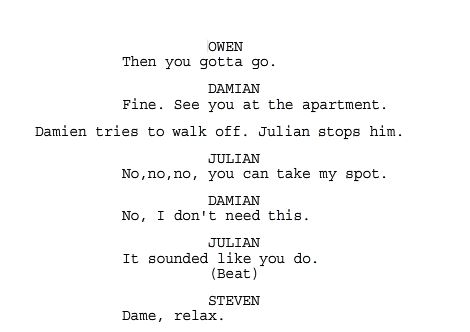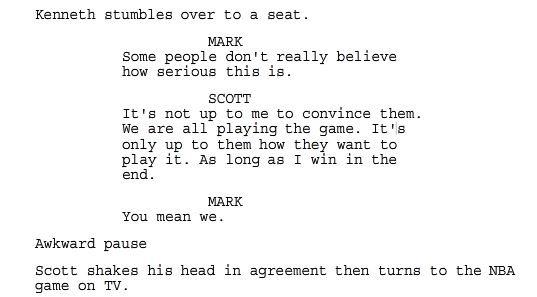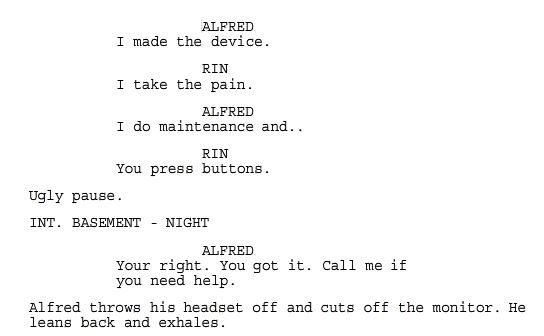In screenplays, it’s sometimes hard to get one’s point across. The way we perceive words is generally face to face, not on a page. Using pauses can enhance dialogue in a script making things more dramatic.
How do you write a (pause) in Dialogue in a Script? You write a pause in a script on a new line of dialogue with colons. For example:
George, I just wanted to let you know.
(pause)
I hate you.
Did you know that there are several ways to write them and they all serve different purposes? Read below to find out more.
The Many Ways to Write a Pause
So now that you know how to write a pause lets get into the different ways to write them.
1.) The first way being…this way.
If you write three dots in the middle of your dialogue it can indicate a hesitation just like writing “(pause)” itself.
This way is a little more subtle and is what many other screenwriters and I prefer over the original way. You will use this method for a clear break in a speech if the character is saying something well worth a break in speech.
One example this can be used is when it’s hard for the character to admit or talk about something. You see these more often in love scripts or that one moment in the script where someone is admitting something.
2.) The second way of writing a pause is to colon any action you want the actor to do in the middle of the dialogue. For example:
John
Sure, how much?
(John reaches in the glove compartment)
Dean eyes his hands.
Dean $7,000
This example gives actual action as a pause even though it’s not outright saying that there should be a moment where time stands still.
This pause method is better seen by the director to be a clue the audience should pay attention to this moment causing a slight two-second shot in the final production.
3.) Using the term (Beat) can act as a pause.
Beats sometimes can become complicated because there are three uses of the term in screenwriting. For a clear explanation on that check out the article below.
But just for reference here most of the time a beat in the smallest unit of measure in a script. So for example, if someone were to stand up and pick up their phone that would qualify as two beats. Now let’s look to see how we can use this in a dialogue line. Check out this example:

From this example, you can see that there is a face-off between the two gentlemen. Not just because of the (Beat) but because of the words said right before the intended pause.
This is one of the first scripts I’ve ever written, and I tended to use beat in those times more than pause or any other form of break in the action I’ve mentioned thus far. But for this, I could have easily used “pause” here.
4.) The action line pause.
Pauses in action lines can be interpreted as pauses in dialogue scenes. What I like most about this type of pause is you can get more creative with it. Check out the examples below:


Happy writing.

